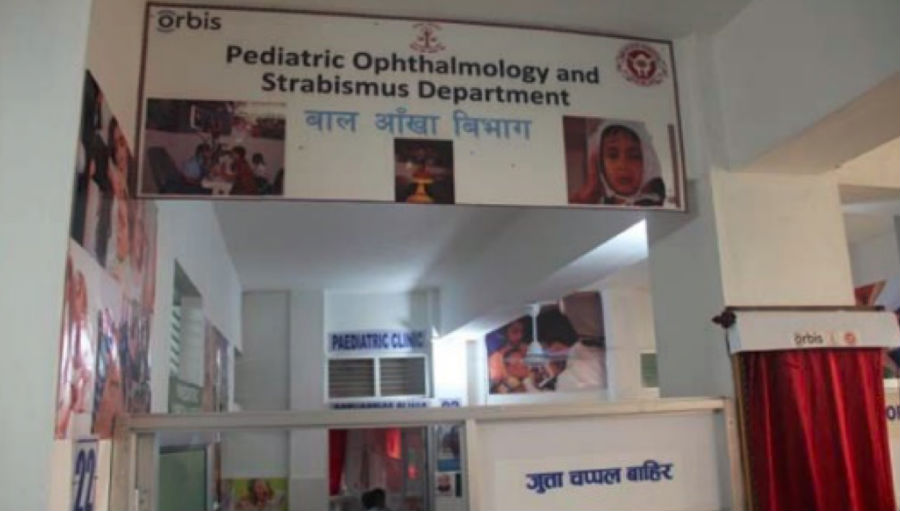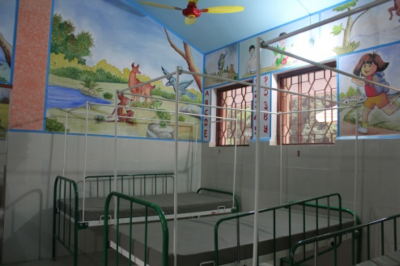Join a powerful, unprecedented alliance for better eye health for all.
Join IAPB-
Choose an alternate language here
 In Nepal, the most blinding conditions among children are preventable; these include – Vitamin A deficiency, Xerophthalmia, measles, ophthalmia neonatorum, eye injuries, congenital cataract and congenital glaucoma. Refractive error, squint and amblyopia are other common causes for vision impairment, low vision and unilateral blindness.
In Nepal, the most blinding conditions among children are preventable; these include – Vitamin A deficiency, Xerophthalmia, measles, ophthalmia neonatorum, eye injuries, congenital cataract and congenital glaucoma. Refractive error, squint and amblyopia are other common causes for vision impairment, low vision and unilateral blindness.
In 2010, with the support of Orbis International, the Nepal Netra Jyoti Sangh started the National Programme for Control of Childhood Blindness in Nepal. The goal, reducing avoidable blindness and visual impairment among children in Nepal.
The impetus of the programme were the results of a 2007 study that showed that in the eye hospitals across Nepal, children were not receiving pediatric eye care services.
NNJS in collaboration with Orbis International conducted the study. This situational analysis of services and human resources on specialty eye care found problems in the geographical distribution of the available pediatric ophthalmology teams in the country.
It found that the single largest cause of visual impairment was refractive error followed by cataract. Refractive error and conjunctivitis were the most common causes of visual impairment reported amongst the pediatric patients.
Despite Nepal’s community ophthalmology programme, identification of refractive error among children was still lacking.
Firstly, parents lacked awareness about pediatric eye care.
Secondly, there was non-availability of pediatric counseling services at the hospital as well as outreach. Thirdly, only a quarter of the eye care facilities had a computerized Management Information System (MIS).
Fourth, most of the sub-specialty services were only available in the capital city, Kathmandu and hence, children in the rural areas, hilly and mountain region remained neglected, un-reached and unnecessarily blind.
Fifth, general anesthesia services were grossly inadequate in Nepal during 2007.

Under this, different programmatic and sustainability strategies were developed. These included 6 strategies:
While implementing the programme, there were many challenges. These included serious political instability at the time, lack of anesthesia services, and lack of dedicated manpower for data collection. The political instability widely affected the patient care services provided at the base hospitals and the outreach programmes. Despite this, the hospitals did commendable work.
Overall, the programme created a huge impact in the field of eye care service delivery.
The Lumbini Eye Institute was developed as a Regional Training and Resource Center in Pediatric Ophthalmology. Another 6 eye hospitals i.e Sagarmatha Choudhary Eye Hospital, Kedia Eye Hospital, Himalaya Eye Hospital, Geta Eye Hospital, Fateh Bal Eye Hospital and Mechi Eye Hospital developed fully equipped pediatric ophthalmology units.
A total of 815,964 children received medical treatment including medicine and spectacles prescription. 32,734 pediatric surgeries were performed among the child patients during the project period (2010-2017). 4 anesthesiologists were trained to deliver safe anesthesia services. 30 pediatric nurses were trained in pediatric ophthalmology. 1,705,233 children were screened using different approaches. 21 eye care centers (ECC) were identified under the project. Activities such as training ophthalmic assistants of ECC were conducted to strengthen the primary level child eye care services in these peripheral centers. In order to assess the coverage of the project, district-wise surgery data was collected, and it showed that the project had covered entire Nepal (77 districts) and 9 states of India.
At present, NNJS plans to establish a separate child friendly pediatric unit in the rest of the eye hospitals that function under it across Nepal. A plan is also being devised to introduce the concept of trained pediatric teams.